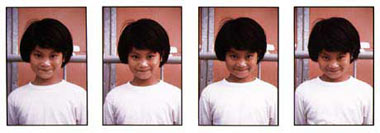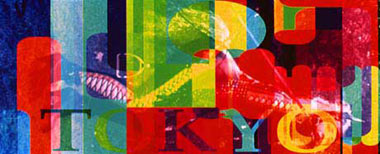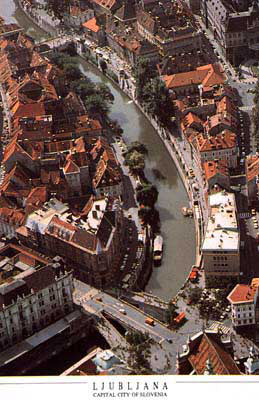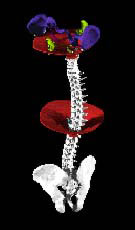(re) Mediation:
The Digital in Contemporary American Printmaking
August 24 – October 3, 1998
USF Contemporary Art Museum
[re] Mediation: The Digital in Contemporary American Prints is an expansion of the 1997 American entry to the 22nd International Ljubljana Biennial of Graphic Arts in Slovenia which was co-curated by CAM Director Margaret Miller and New York-based independent curator Jade Dellinger which returns to the U.S. for its American premier. The show features recent works by American artists who are exploring the capabilities of digital media in the field of printmaking, and includes Doug Aitken, John Baldessari, Keith Edmier, Peter Halley, David Humprey, Michael Joaquin Grey, Alfredo Jaar, Charles Long, Yasumasa Morimura, Robert Rauschenberg, Michael Rees, Frank Stella, Diana Thater, Dani Tull, Pae White and Andrea Zittel.
The past two decades have seen a phenomenal change in the development of electronic media and computing power. This has created a significant perceptual shift that can be examined by surveying the work of a few artists who have produced powerful works using and exploring the advantages of advancements in digital technologies. An ever expanding range of tools and modeling systems has allowed some of our leading artists to create work with techniques and effects that have not existed before. Recent advances in color photographic processes and digital printmaking by such publishers as Muse (X) in Los Angeles and Cone Editions Press in East Topsham, Vermont, allow for high quality direct pigment transfer prints that are stable and archival. Skilled artisans in an atelier setting are working with artists to give them the new tools to make their images and have invented output forms that are tactile, painterly and stable, combining the qualities of painting and photography. The prints selected for this exhibition, created from 1995 to the present, will serve to demonstrate that new printing processes have revived the "aura" (magic, spirit, authenticity) of the original, lost in mechanically produced images as described by Walter Benjamin in his essay "Arcades Project."
Artists are able to manipulate and create images in the computer and to go directly to paper without an intermediary step of a negative or etching plate. Images can be created in cyberspace and transported anywhere in the world and the output into the real world can take place at any designated site. Digital printmaking profoundly alters the conceptual and practical framework for printmaking. The traditional print is an analog representation of the variation in tone and line present in what is depicted, but the digital print is a discrete image which has been encoded into a uniform subdivision of pixels. The digital image can be stored as a file on a computer and transmitted electronically and can be manipulated easily and rapidly at any time. Cultural changes can be reflected in the continual mutation and proliferation of images in the electronic environment. This method of working not only facilitates the creative process but allows for the dissemination of images at a nominal cost to a massive and global audience. An essential part of the recent history of printmaking has been to make multiple originals of significant art so that they could be acquired by a broad and diverse audience. The revolution of new technologies is dramatically extending this possibility and allowing artists to participate and transform cultural context by capturing and manipulating information to create new levels and forms of communication. Widespread integrated changes in technological conditions have affected the collective consciousness and have triggered important changes in cultural development.
This exhibition is not about the influence or impact of technology on culture but rather it is about the use of digital systems to advance the mediation and communication between individuals and institutions. It is a survey of artists who have engaged their art with mechanical and digital technologies as an instrument for change while changing our perspective on printmaking possibilities.

Alfredo Jaar, One Hundred Times Nguyan, 1996

Pae White, Pony Girl Edition, 1996, Tokyo.

Ljubljana: Capital of Slovenia

Michael Rees, Ajna Spine 2, visit website